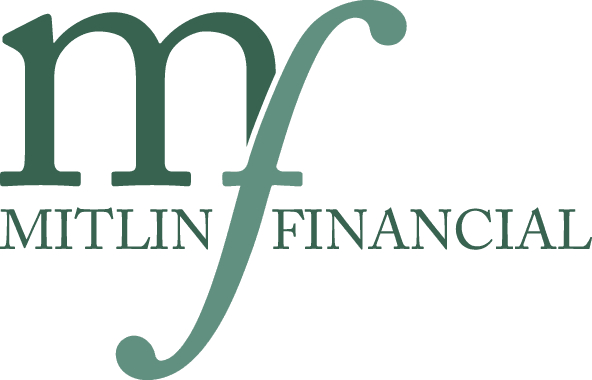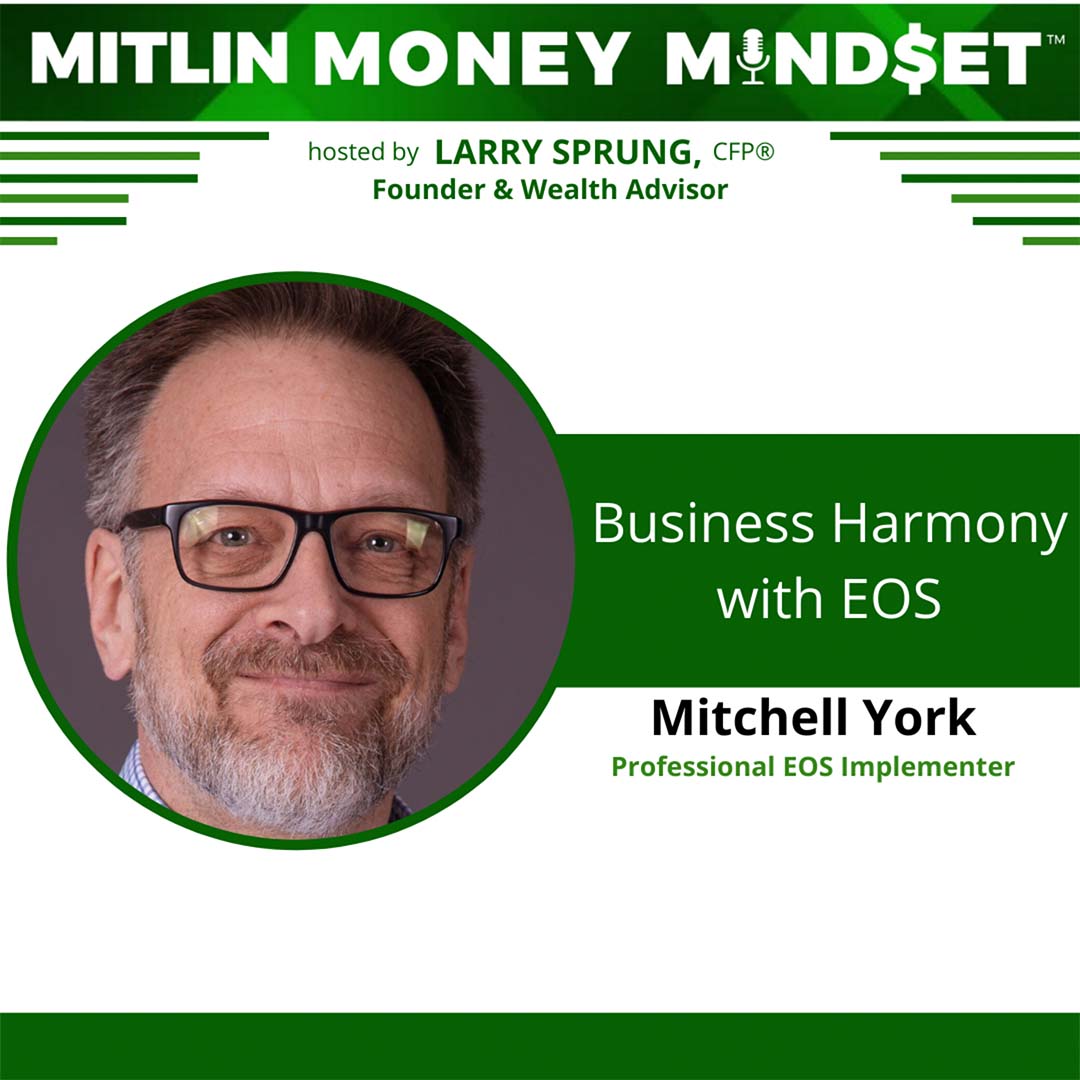Today’s guest on the Mitlin Money Mindset™ is Mitchell York. He is a professional EOS Implementer who helps leadership teams gain clarity in their vision, goals, and processes so they can get what they want from their business. The EOS can be applied to almost any business and Mitch has worked with clients in a range of different industries. Prior to becoming a coach, Mitch had a successful corporate career as a senior executive with high-growth companies. Most notably, he was the president of Lending Tree in its startup phase. Creating processes and procedures to help the company position itself for rapid growth. GE Capital— which invested $50 million in Lending Tree— said the company’s processes were the best they’ve ever seen for a startup. Mitch has helped us implement EOS at Mitlin, and I’m looking forward to sharing the conversation we had.
You will want to hear this episode if you are interested in…
- Mitch’s path that led to being a professional EOS implementer? [1:54]
- What is EOS? [3:33]
- What does an EOS Implementer do? [5:59]
- How long does it take to get EOS implemented throughout the entire business? [9:27]
- The 6 key components of EOS [13:41]
- The 8 questions on the vision traction organizer [16:23]
- Types of businesses that are ideal candidates for considering EOS [20:02]
- Top 3 benefits to the business after EOS is implemented [20:41]
- Mindset requirements from owners and leadership teams [24:10]
- What Mitch did today that put him in the right mindset for success? [27:15]
What is EOS and where did it come from?
EOS stands for the entrepreneurial operating system. It was developed about 18 or so years ago by Gino Wickman who wrote the book Traction. He went into his father’s business to do a turnaround of the company, which he did and sold it after a number of years. He then went on to other entrepreneurial ventures. In the course of doing that he was a co-founder of the entrepreneur’s organization EO chapter in Detroit. What he found in talking and getting to know all of these entrepreneurs was that everybody had the same hundred problems. A business is a business, products and services don’t really matter. They all have the same set of problems.
However, there was no way to figure out how to resolve them comprehensively. Over time, he put these things together in a model that suggested that problems companies have in this high growth stage are the result of weakness in one or more of six key components. Once he realized that every problem being brought to him fit into one of 6 buckets he started developing the tools in each component that would help solve problems related to each one. And that became EOS as we know it now.
The 6 key components of EOS
The 6 key components start with vision, which means having everybody in the organization on the same page understanding what the company does, who it does it for, why it does it, and where it’s headed. You can’t have a good company if everybody has a different opinion of what this company is in business to do. That’s number one. Number two is people. You have to have great people to have a great company. The third component is data. That means running the business by the numbers instead of hunches and opinions. The fourth component is what we call the issues component. That’s about having a process for solving issues as they arise, instead of having them linger month after month, year after year. The fifth component processes. That means having processes documented and followed by everybody in a simple way. The sixth component is what we call the traction component. That has to do with execution and critical tools for execution. Listen to the episode for more information.
The vision traction organizer
Mitch starts by teaching foundational tools and then gets into the vision of the company and they compartmentalize all of this in a two-page strategic plan called the vision traction organizer, which answers 8 key questions. The first is what are your core values? Core values are those 3-6 fundamental principles of how you operate the company. You use them to hire, train, motivate, compensate, and fire people. Everyone has to meet those. The second question is what is your core focus? What’s the purpose, cause, or passion of your business, and what’s your niche? The why of what you do and the what of what you do. The third question is what’s your 10-year target? A long-distance number, your big audacious goal that you’d like to get to.
The fourth is your marketing strategy. Who’s your target market? What are the three unique things that make you stand out? What’s your proven process? Do you have a brand promise or guarantee? The fourth question is what is your three-year picture? What will the business look like in three years in your mind? The fifth question is what’s your one-year plan? The 3-7 most critical goals— they have to be specific, measurable, attainable, relevant, and time-bound— that you need to achieve in the next year to be on target for your three-year picture. Finally, your rocks, which are 90-day goals. Your 3-7 90 day goals for the business. Number eight is what are your issues? If you don’t have a written issues list, write one down so you can address them.
Resources & People Mentioned
Connect with Mitchell York
Mitchell York is a Professional EOS Implementer who helps leadership teams gain clarity in their vision, goals and processes so they can get what they want from their businesses.
A professional certified coach for more than 18 years, Mitch has worked with clients in a range of industries including financial services, e-commerce, energy, healthcare, legal, media, education, franchising, manufacturing and the arts.
Prior to becoming a coach, Mitch had a successful corporate career in senior executive positions with high-growth companies.
He was president of LendingTree Inc. in its startup phase, creating processes and procedures to help the company position itself for rapid growth. GE Capital, which invested $50 million in LendingTree, said the company’s processes were the best they’d ever seen for a startup.
Later, he was president of NetCreations Inc., a publicly-held email marketing company, where he built the executive management team, increased sales from a few million dollars to $60 million in one year, and positioned the company for a successful acquisition for $111 million in cash.
Mitch was the founding publisher of TechWeb, the first technology website to sell advertising, and vice president and founder of the Internet division of CMP Media Inc., an international technology publishing company that was sold for $1 billion in cash. TechWeb was valued at more than $300 million at the time of CMP’s sale. Mitch’s organization included 150+ editors, salespeople, software engineers and marketing staff.
At CMP for 17 years, Mitch was publisher of VARBusiness, one of the leading technology magazines in the tech industry. He also served as senior vice president of Ziff Davis Media where he published InteractiveWeek, one of the pioneering newspapers covering e-commerce, and led a team of more than 150 people.
He received an M.B.A. from Columbia University and a B.A. with honors in English from Northwestern University.
Guests on the Mitlin Money Mindset Show are not affiliated with CWM, LLC, and opinions expressed herein may not be representative of CWM, LLC. CWM, LLC is not responsible for the guest’s content linked on this site.
Connect With Mitlin Financial
- podcast(at)MitlinFinancial.com – email us with your suggestions for topics or guests
- https://mitlinfinancial.com
- Follow on Twitter
- Follow on Instagram
- Subscribe on Youtube
- Follow on Linkedin
- Follow on Facebook
Subscribe to Mitlin Money Mindset™ on
Apple Podcasts, Spotify, Google Podcasts


